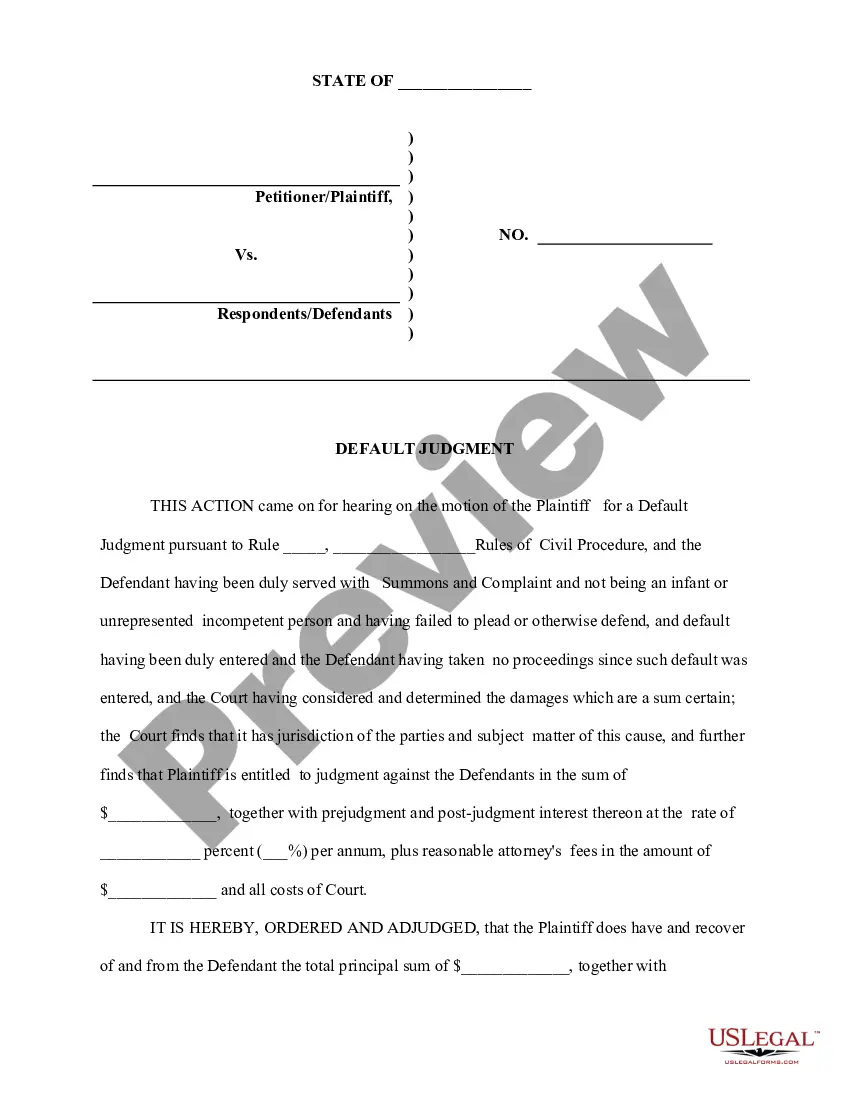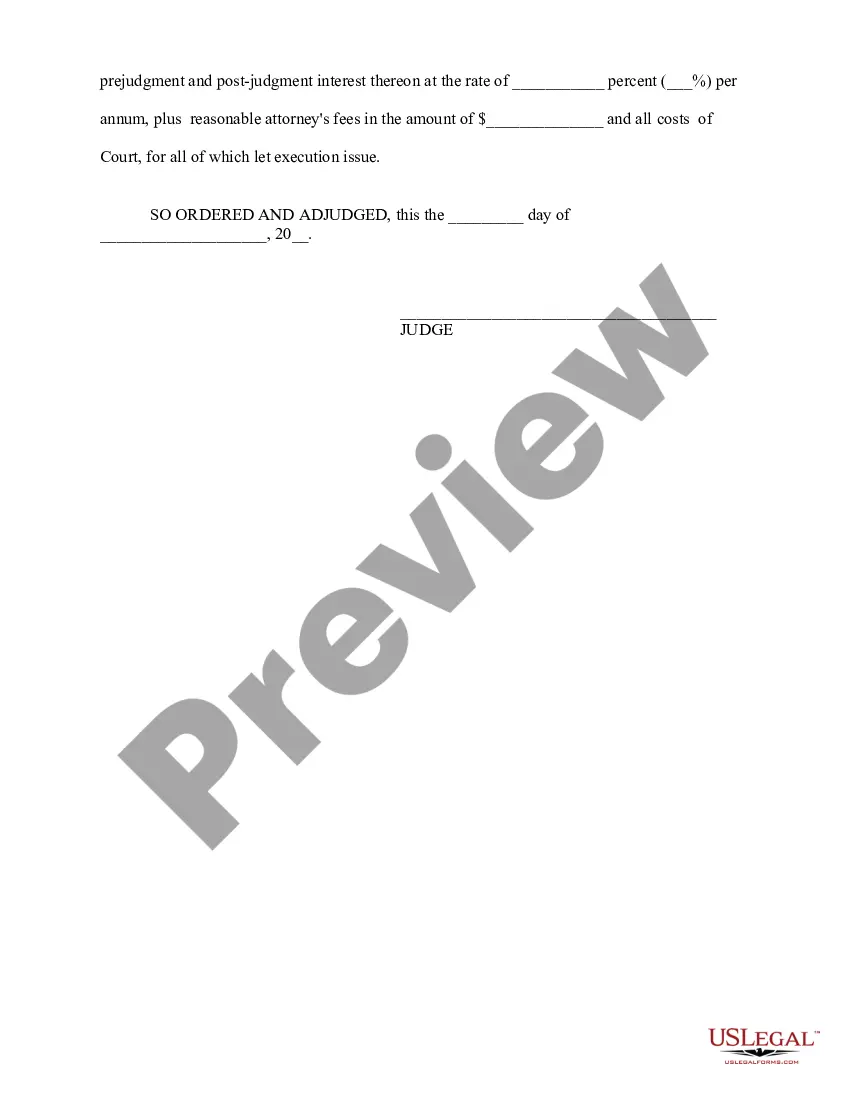San Jose, California, Application for Entry of Default Affidavitvi— - Motion - Entry of Defaul— - Default Judgment In San Jose, California, the legal process to obtain an entry of default and subsequently default judgment involves several steps. This process can be initiated by the plaintiff when the defendant fails to respond or defend themselves within the specified legal timeframe. To move forward with this procedure, an application for entry of default must be filed alongside an affidavit and motion. The court then reviews these documents to determine if they meet the necessary requirements for default judgment. The application for entry of default is a formal request submitted to the court, asking them to enter a default against the defendant due to their failure to respond. This document should include pertinent information such as the case number, the court's name, the parties involved, and the date the defendant was served with the initial complaint. Accompanying the application, an affidavit is typically provided. This sworn statement under penalty of perjury certifies that the defendant has indeed failed to respond or take any action within the required time limits. It serves as evidence supporting the plaintiff's claim for default judgment and must be based on accurate and truthful information. The motion for default judgment is another crucial component of this process. In this motion, the plaintiff requests that the court proceeds to enter a default judgment against the defendant. This document outlines the legal basis for the claim, highlights the defendant's lack of response, and details the specific relief sought, such as monetary damages or injunctive relief. Once these documents are compiled, they are submitted to the court for review. The court assesses the validity of the application, affidavit, and motion to ensure they meet the required legal standards. If approved, the court will then issue an entry of default, formally acknowledging the defendant's failure to respond. This entry marks a significant milestone in the case, establishing the defendant's liability and allowing the plaintiff to proceed with a default judgment hearing. Different types of San Jose, California, applications for entry of default, affidavits, motions, and default judgments may vary depending on the nature of the case or the specific relief sought. Some common types may include: 1. Application for Entry of Default — Personal Injury: Used in personal injury cases, where the plaintiff seeks compensation for injuries sustained due to the defendant's negligence or intentional actions. 2. Application for Entry of Default — Breach of Contract: In cases involving breach of contract, this application is submitted to pursue damages resulting from the defendant's failure to fulfill their contractual obligations. 3. Application for Entry of Default — Landlord-Tenant Disputes: Specifically used when a tenant, as the defendant, has failed to respond in a legal dispute with the landlord, prompting an entry of default to be sought. 4. Application for Entry of Default — Unpaid Debt: Suitable for cases involving non-payment of debts, this application is filed by creditors seeking a default judgment to recover the owed amount. In summary, the process of obtaining an entry of default and default judgment in San Jose, California, involves the submission of an application, affidavit, and motion. These documents should clearly outline the defendant's failure to respond and support the grounds for default judgment. Different types of applications for entry of default exist, tailored to specific legal issues like personal injury, breach of contract, landlord-tenant disputes, and unpaid debts.
San Jose California Application for Entry of Default - Affidavit - Motion - Entry of Default - Default judgment
Description
How to fill out San Jose California Application For Entry Of Default - Affidavit - Motion - Entry Of Default - Default Judgment?
How much time does it normally take you to draft a legal document? Considering that every state has its laws and regulations for every life scenario, locating a San Jose Application for Entry of Default - Affidavit - Motion - Entry of Default - Default judgment suiting all local requirements can be tiring, and ordering it from a professional attorney is often expensive. Numerous web services offer the most popular state-specific templates for download, but using the US Legal Forms library is most advantegeous.
US Legal Forms is the most extensive web catalog of templates, gathered by states and areas of use. In addition to the San Jose Application for Entry of Default - Affidavit - Motion - Entry of Default - Default judgment, here you can get any specific document to run your business or individual deeds, complying with your county requirements. Experts verify all samples for their actuality, so you can be sure to prepare your documentation correctly.
Using the service is remarkably simple. If you already have an account on the platform and your subscription is valid, you only need to log in, choose the needed sample, and download it. You can pick the file in your profile at any time later on. Otherwise, if you are new to the website, there will be some extra actions to complete before you obtain your San Jose Application for Entry of Default - Affidavit - Motion - Entry of Default - Default judgment:
- Check the content of the page you’re on.
- Read the description of the template or Preview it (if available).
- Look for another document using the related option in the header.
- Click Buy Now once you’re certain in the selected file.
- Select the subscription plan that suits you most.
- Sign up for an account on the platform or log in to proceed to payment options.
- Pay via PalPal or with your credit card.
- Switch the file format if needed.
- Click Download to save the San Jose Application for Entry of Default - Affidavit - Motion - Entry of Default - Default judgment.
- Print the sample or use any preferred online editor to complete it electronically.
No matter how many times you need to use the purchased document, you can find all the samples you’ve ever saved in your profile by opening the My Forms tab. Give it a try!








